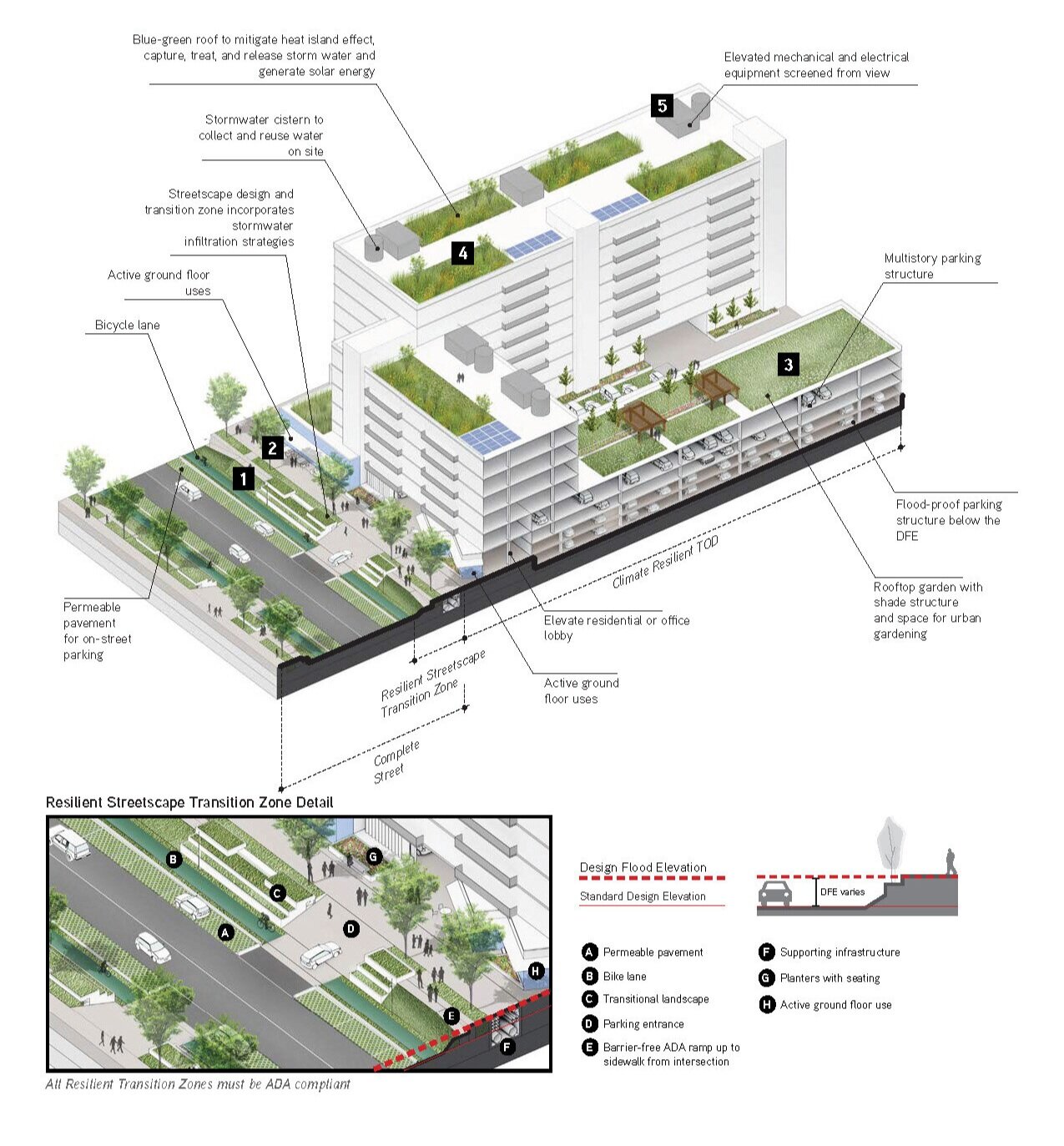Climate-Resilient Urban Development Guidelines
Honolulu, HI
These “integrated adaptation” guidelines provide the City and County of Honolulu, urban designers, planners, and private developers a playbook on how to design climate-resilient urban development while improving the adjacent public realm and the quality of the urban experience.
Climate change will affect all aspects of life in Hawaii, from natural ecosystems to human health and the built environment. The City and County of Honolulu have committed to plan for and adapt to the effects of climate change. As part of this effort, changes to regulations for both public and private development are being considered and implemented to enhance the resilience of the built environment in Honolulu, particularly around vulnerable areas with planned TOD.
Role
As part of a multidisciplinary design and engineering team, Local Form Studio’s Christopher Riale led the creation of development guidelines and preferred building typologies that provide recommendations and best practices for integrating climate-resilient building methods and urban design standards for new construction near high speed rail stations in Honolulu. These guidelines will ensure that new urban development is both climate resilient and enhances the public realm.
The purpose of this document is to provide preliminary guidance that can be used by developers, landowners, and design professionals in Honolulu transit-oriented development (TOD) and other urban areas that may be vulnerable to sea level rise, urban heat island effect, flooding, and other climate change related hazards.
* Work completed by Christopher Riale while employed with Arup.
Client
City and County of Honolulu
Scale
3 typologies
Key Services
Urban Design
Development Guidelines
Year: 2019 - 2020



